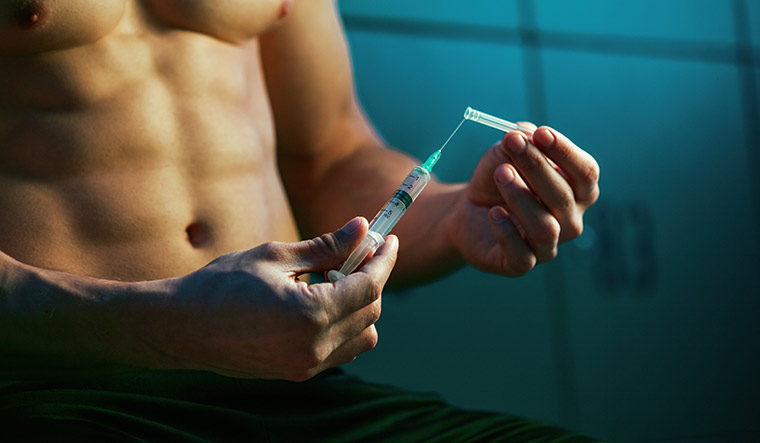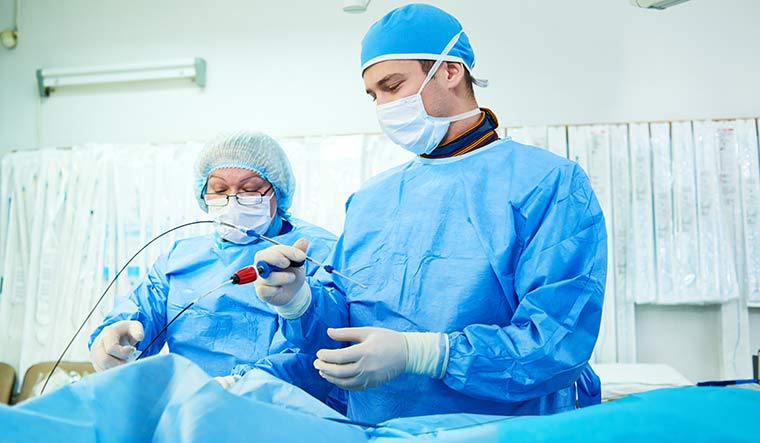ACCORDING TO AN Australian study published in the British Journal of Sports Medicine, running on a regular basis for as little as 50 minutes a week is associated with a significantly lower risk of death from all causes, especially cardiovascular diseases and cancer.
The researchers reviewed 14 studies involving 2,32,149 people whose health had been tracked for between 5.5 and 35 years; 25,951 participants died during the study period.
Compared to people who did not run at all, those who ran had 27 per cent lower risk of death from all causes, 30 per cent lower risk of death from cardiovascular diseases and 23 per cent lower risk of death from cancer. The benefits were seen in both men and women and among those who ran only once a week, or even less frequently.
Duration, frequency and intensity did not seem to matter much. Even people who ran for less than 50 minutes a week and at a speed below 9.7km per hour tend to live longer. The study did not find greater benefits with higher amounts of running.
Testosterone therapy linked to blood clots
TAKING TESTOSTERONE supplements can double a man's risk of suffering venous thromboembolism (VTE), a potentially deadly medical condition which causes blood clots to form in the veins.
Testosterone therapy is already known to increase a man's risk of heart attack and stroke. Millions of men who do not suffer from hypogonadism (a condition in which the body does not produce enough testosterone) take testosterone supplements to combat common symptoms of ageing such as weight gain and sexual disfunction.
For the study published in JAMA Internal Medicine, the researchers analysed the use of testosterone in 39,622 men, aged 18 to 99 years, who had venous thromboembolism. Among them, 7.8 per cent had been diagnosed with hypogonadism.
Men without hypogonadism had a 2.3 times increased risk of developing a deep vein clot within six months of taking the hormone. The risk was two times greater in men diagnosed with hypogonadism. The risk was even greater in middle-aged men than in seniors.
Men under 65 who did not have hypogonadism had about three times greater risk compared to men 65 years and older, whose risk was only about 1.5 times greater.
Herbal remedies are risky
CANCER PATIENTS who take herbal products such as garlic, ginger and turmeric could be doing more harm than good as these products can interfere with their treatment and affect wound healing.
Cancer patients often turn to complementary therapies even though there is no scientific evidence for their efficacy. Skin lesions that appear when the cancer has spread are often difficult to treat effectively. The pain and the smell caused by these lesions often push patients to try different herbal products and creams that can actually cause harm.
The ingredients in many of these products can delay wound healing and interfere with systemic anti-cancer treatments such as hormone therapy or chemotherapy.
Products such as garlic, ginger, ginkgo, ginseng, hawthorn, horse chestnut and turmeric can slow down blood-clotting, causing the wound to take longer to heal and cause more scarring.
The study author urges patients to try complementary therapies such as mindfulness, acupuncture, Reiki and yoga to alleviate psychological distress. The study was presented at the Advanced Breast Cancer Fifth International Consensus Conference.
Late eating is harmful
EATING LATE IN the evening is not good for women’s cardiovascular health. Women who consumed most of their daily calories later in the evening had a greater risk for cardiovascular disease, according to a study presented at the American Heart Association’s Scientific Sessions 2019.
The study included 112 women, average age 33, whose heart health was assessed at the start of the study and 12 months later.
Most women ate some food after 6pm, but those who consumed a higher proportion of their daily calories after this time had poorer heart health. They were more likely to have higher blood pressure, higher body mass index and poorer long-term control of blood sugar. Heart health deteriorated with every 1 per cent increase in calories consumed after 6pm.
Did You Know?
A person's risk of atrial fibrillation, or irregular heart beat that can lead to stroke, heart failure and other heart related complications, increases by about 3 per cent for every one inch increase in height over the average height of 5 feet and 7 inches.
American Heart Association’s 2019 Scientific Sessions
Fit to return to work?
HOW FAST A stroke survivor can walk could determine whether they are ready to go back to work, according to a study published in the journal Stroke.
About 25 per cent of patients who suffer a stroke are younger than 65 years old and about 44 per cent may not be able to return to work mostly because of walking difficulties.
The researchers compared mobility in 46 stroke survivors, aged 18 to 65, with 15 people who did not have a stroke. The participants took a walking test to see how far and how fast they could walk in three minutes.
A walking speed of more than three feet per second was identified as the threshold that predicts whether a stroke survivor can return to work.
Among the 23 per cent of study participants who went back to work, 90 per cent walked faster than three feet per second, almost six feet per second. But those who did not return to work walked only about 2.5 feet per second.
Benefits of angioplasty limited
ANGIOPLASTY AND BYPASS surgery may not provide any added benefits over medications and lifestyle changes in preventing an array of major cardiovascular events in patients with severe but stable heart disease, according to the findings of a major international clinical trial presented at the American Heart Association meeting.
The trial was conducted at 320 sites in 37 countries and included 5,179 patients with moderate to severe but stable ischaemia—a condition in which blood flow to the heart is reduced due to clogged arteries. About 50 per cent of patients had severe ischaemia, 33 per cent had moderate, and 12 per cent had mild.
All the participants received medications such as aspirin, blood pressure medications and cholesterol-lowering drugs and lifestyle advice. But half were also randomly assigned to undergo either angioplasty or a bypass surgery.
Overall, the risk of major cardiovascular events like heart-related death, heart attack, hospitalisation with unstable angina (chest pain), heart failure or cardiac arrest was similar for patients in both groups. Invasive procedures were not better than conservative therapy at reducing adverse heart events.
However, invasive treatments provided better symptom relief and quality of life in patients who had severe and frequent chest pain. But they did not lower their odds of death or heart related problems.
The findings, however, do not apply to heart patients with blockages in the left main coronary artery and those suffering a heart attack. In such cases the procedures do save lives.
Supercooling can preserve donor organs longer
A NEW SUPERCOOLING technique can triple the time that donor organs can be stored before transplantation. Once removed, human livers can be currently preserved for only about nine hours—stored at 4 degrees Celsius—before the tissues become damaged, making the organ unusable for transplantation. This short time frame makes it very difficult to get the organs to compatible patients, especially if they live far away.
Organs can survive longer in freezing temperatures, but it causes ice crystals to form within the organs' cells which damages the tissues and the organ would be unviable.
The new supercooling method allows the organ to be preserved in -6 degrees Celsius without freezing and causing damage to the tissues for up to 27 hours, giving doctors and patients a much longer time to work with.
The technique was developed by scientists at Harvard Medical School and Massachusetts General Hospital. The findings are published in the journal Nature Biotechnology.
Did You Know?
An international survey found kindness tops qualities that we look for in a life-partner.
Journal of Personality
Spot depression in kids
ACCORDING TO A US survey, two-thirds of parents find it difficult to distinguish between their teen’s normal mood swings and signs of depression.
The researchers surveyed 819 parents with at least one child in middle school, junior high, or high school. They found that 40 per cent of parents could not differentiate between normal ups and down and depression symptoms; 30 per cent said their kids are good at hiding feelings. Other hindrances include not talking about feelings with their kids, not spending enough time with their kids and not being aware of the signs of depression.
But children are familiar with depression and suicide. One in four parents said their child knows a peer with depression and one in 10 knew a peer who committed suicide.
Since rates of teen suicide are steadily rising, it is paramount to recognise depression in youth. Parents should look out for signs of depression in kids, which include sadness, isolation, anger, irritability and acting out.
Not worth the wait
ACCORDING TO A study presented at the American College of Surgeons annual meeting, delaying a gallbladder removal operation can increase the odds of complications, longer hospital stays and hospital readmissions.
Gallstones that form in the gallbladder can lead to serious inflammation and infection. The study was based on nearly 50,000 patients who had either a laparoscopy or open abdominal surgery for gall bladder attack.
The patients were divided into three groups based on the time from admission to surgery: 12,968 patients had their gallbladders removed within 24 hours of admission; 26,758 patients had the surgery between 24 and 72 hours after admission and 9,594 patients had the surgery 72 hours or more after admission.
Delaying the operation three days or more after admission increased the likelihood of requiring an open operation versus a laparoscopic procedure by 28 per cent.
The risk of complications also increased with delayed surgery. The risk of sepsis increased by nearly 50 per cent, venous thrombus embolism by over 80 per cent, and surgical site infection by 20 per cent when surgery was done 72 hours or more from admission compared to within 24 hours.
Moreover, patients who had the surgery within 24 hours of admission were able to go home the day after the operation, while patients who had the procedure after 72 hours had to stay in the hospital for about five days.
Did You Know?
Listening to music can relieve the cardiac stress induced by driving in heavy traffic.
Complementary Therapies in Medicine
Exercise more as you grow old
ACCORDING TO A South Korean study published in the European Heart Journal, older adults should increase or maintain their exercise levels to prevent heart disease and stroke, even if they have disabilities and chronic health conditions such as diabetes and hypertension.
The study included more than 1.1 million people aged 60 and older without cardiovascular diseases at the start of the study. Among them, 47 per cent were men. The participants had two health screenings between 2009 and 2012, and they were followed until the end of 2016.
About two-thirds of the participants were physically inactive during both screening periods. Women were more likely to be inactive.
While 22 per cent of inactive people increased their physical activity by the time of the second screening, 54 per cent of those who had been active became inactive by the time of the second screening.
During the follow-up period, 1,14,856 cases of heart disease or stroke occurred. Those who were inactive at the start and became moderately or vigorously active three to four times a week by the second screening had an 11 per cent reduced risk of cardiovascular problems. Those who increased their activity from one or two times a week to five or more times a week had a 10 per cent reduced risk.
At the same time, those who were moderately or vigorously active more than five times a week at the first screening and then became inactive had a 27 per cent increased risk of cardiovascular issues.
Even people with disabilities and chronic conditions lowered their risk with increased activity. The risk was 16 per cent lower for those with disabilities, and 4 to 7 per cent lower for those with type 2 diabetes, high blood pressure or high cholesterol.
CONTRIBUTOR: SHYLA JOVITHA ABRAHAM







